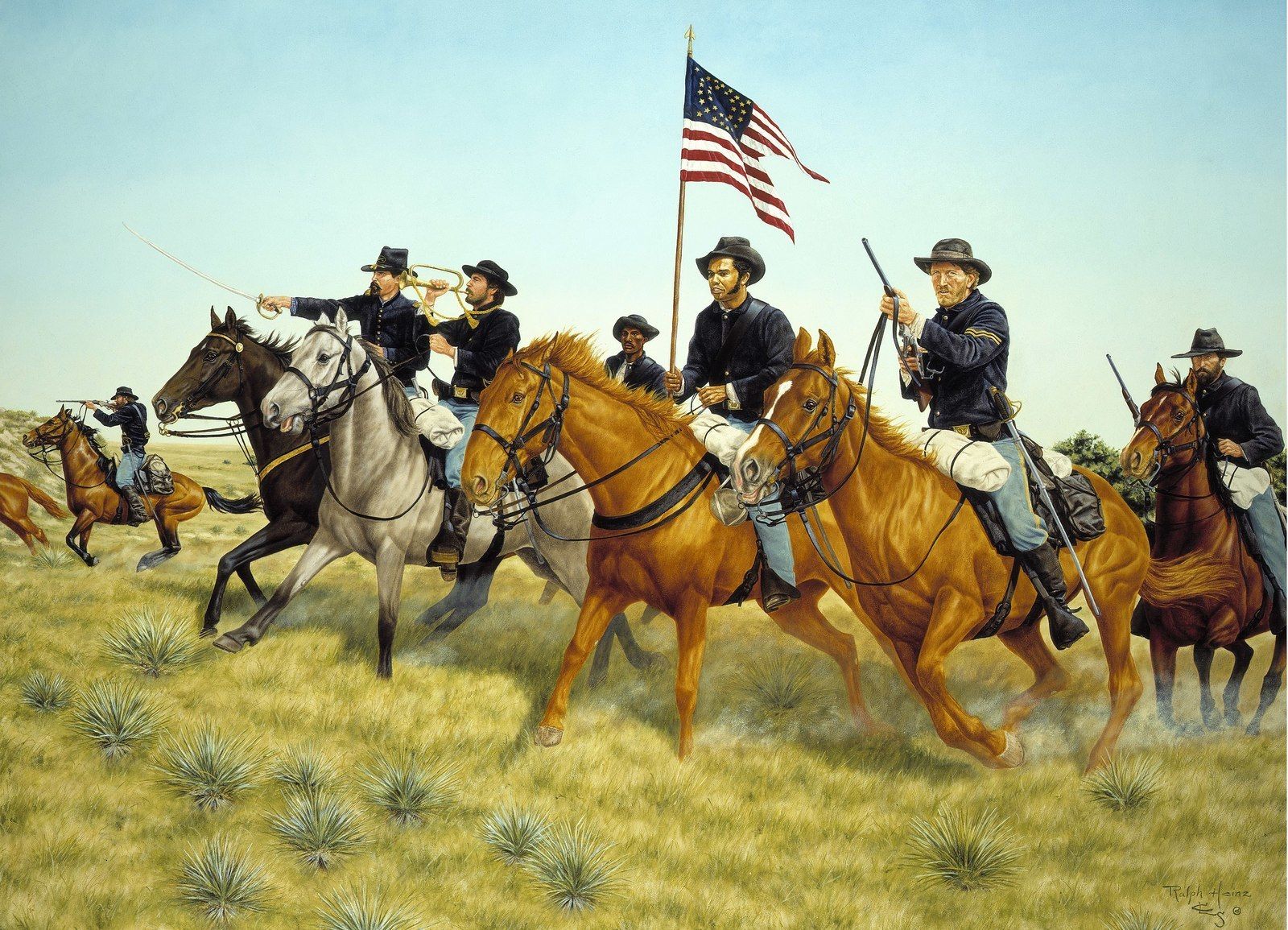1043: The Earth Is Weeping: 6of6: The Epic Story of the Indian Wars for the American West by Peter Cozzens.

Photo: No known restrictions on publication. The Battle of Prairie Dog Creek (August 21, 1867) ended the Army's offensive operations on the Kansas frontier for the year. Ralph Heinz - National Guard Heritage Paintings (http://www.nationalguard.mil/Resources/Image-Gallery/Historical-Paintings/Heritage-Series/Battle-of-Prairie-Dog-Creek/) Western Kansas, August 21, 1867. After the Civil War, settlers rushed to the rich and relatively empty lands of the Great Plains. By mid-1867 the Plains Indian tribes, recognizing the threat to their traditional way of life, were regularly attacking settlers, railroad workers and travelers. When the angry and frightened citizens of Kansas demanded military help, the War Department authorized placing volunteer militia units on active duty during the emergency. On July 15, 1867, four companies of the 18th Kansas Volunteer Cavalry were mustered into Federal service. Under command of Captain Horace L. Moore, the 18th set out immediately for a month of vigorous campaigning. Returning to camp at Ft. Hayes, then in the midst of a cholera epidemic, the Kansans then joined forces with the 10th U.S. Cavalry, the famous black "Buffalo Soldiers." A combined force of 135 men, commanded by Captain George A. Armes of the 10th, rode down the Saline River; Captain Moore, with 125 Kansans, scouted upstream. The two groups had lost contact with each other when Captain Armes' group was struck by 300 to 400 Kiowas and Cheyennes under the great war chiefs Satanta and Roman Nose. As Armes' group of men held their ground through fierce fighting, the men of the 18th Kansas, hearing the noise of battle, managed to fight their way through to Armes. To break the stalemate, Captain Armes formed a party for a charge on the Indians. Led by Armes, the force of about 20 black regulars and Kansas volunteers moved first toward Prairie Dog Creek, and then, turning, charged up the hill toward the main body of warriors. The Indians broke and scattered, ending the day's fighting. The cavalry had lost 3 men dead and 36 wounded; the Indians, 50 dead and 150 wounded. The Battle of Prairie Dog Creek ended the U.S. Army's offensive operations on the Kansas frontier for the year, and in the fall treaties were signed with the tribes of the Southern Plains. The proud tradition of the Permission details commissioned by the National Guard Bureau View more (https://en.wikipedia.org/wiki/American_Indian_Wars#) Public Domain (https://commons.wikimedia.org/wiki/File:The_Battle_of_Prairie_Dog_Creek.jpg) view terms File:The Battle of Prairie Dog Creek.jpg http://JohnBatchelorShow.com/contact http://JohnBatchelorShow.com/schedules Parler & Twitter: @BatchelorShow The Earth Is Weeping: 6of6: The Epic Story of the Indian Wars for the American West by Peter Cozzens. https://www.amazon.com/Earth-Weeping-Story-Indian-American/dp/0307958043/ref=sr11?s=books&ie=UTF8&qid=1479172609&sr=1-1&refinements=p_27%3APeter+Cozzens Bringing together a pageant of fascinating characters including Custer, Sherman, Grant, and a host of other military and political figures, as well as great native leaders such as Crazy Horse, Sitting Bull, Geronimo, and Red Cloud, The Earth is Weeping—lauded by Booklist as “a beautifully written work of understanding and compassion”—is the fullest account to date of how the West was won…and lost. With the end of the Civil War, the nation recommenced its expansion onto traditional Indian tribal lands, setting off a wide-ranging conflict that would last more than three decades. In an exploration of the wars and negotiations that destroyed tribal ways of life even as they made possible the emergence of the modern United States, Peter Cozzens gives us both sides in comprehensive and singularly intimate detail. He illuminates the encroachment experienced by the tribes and the tribal conflicts over whether to fight or make peace, and explores the squalid lives of soldiers posted to the frontier and the ethical quandaries faced by generals who often sympathized with their native enemies.